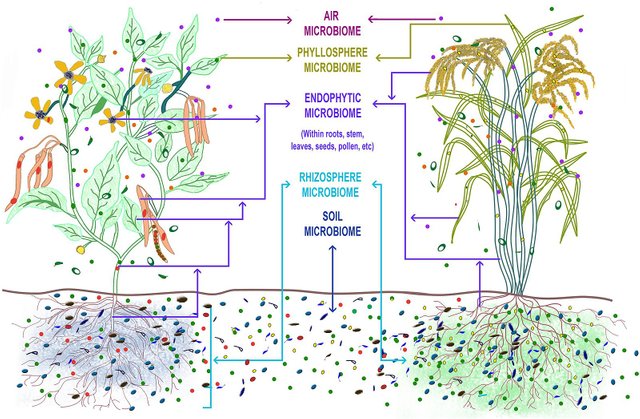Arrays of Agricultural topics 👉Choose-Write-Post#13
Greetings my dear friends of Steemit and Steem-Agro
In continuation to my yesterday's post I continue with the topic of discussion on plant breeding.
Pure line selection involves selecting individual homozygous plants and growing the progenies of each selected plant. The progeny of a homozygous plant is known as a pure line homozygous plants have traits where the gene pair has identical alleles. The progeny and succeeding generations will be pure line and breed true because the same genotype will be carried from generation to generation. This pure line could become a variety if it is superior in performance to the older varieties.
This breeding method is widely used for self pollinating crops like barley oat and soybeans. It's also used as an important part of broader breeding programs for many other crops including cross pollinated crops. It's important to remember that for selection to be successful plants within a population must be of different genotypes. The difference between mass selection and pure line selection is also important. The result from mass selection would be a mixture of similar plants that may differ for some characteristics. The result from pure line selection would be a group of identical plants.
Hybridization is the third general breeding method and is the mating of genetically different individuals. This can be accomplished by artificially transferring the pollen of the desirable male parent to the stigma of the desirable female parent. In self pollinating crop species that have both male and female parts within the same flower the stamens must be removed before crossing to avoid self-pollination hybridization of existing varieties lines or plants allowing recombination of alleles and genes or different traits in the offspring is a way to expose genetic variability selection would be the next step after hybridization to identify and select the desirable genotypes. Hybridization can be used for different purposes. It can be used to recombine alleles and improve a single character such as yield or it may be used to recombine two or more desirable characteristics of the parents into one individual such as yield and lodging resistance. hybridization can also be used to produce an f1 hybrid that expresses heterosis or hybrid vigor ove that of the parents. This is often used in maize breeding to improve maize varieties to illustrate hybrid vigor suppose high yield actually was caused by the presence of dominant alleles at four low side by crossing parent one that had high yield genes at low sigh one and two with parent two that had high yield genes at low sigh three and four we would be able to produce an f1 hybrid that had one dominant allele for each of the four loose I giving extremely high yield therefore the f1 hybrid progeny expresses heterosis over that of its parents improving crop varieties through plant breeding is challenging and difficult because many characters are controlled by more than a single gene frequently desirable traits of agronomic importance are conditioned by alleles at many low straight such as high yield and drought tolerance may be controlled by many genes. Some of which are not known to the plant breeder.
Thank you for reading my post.
I would like to invite three fellow Steemians to participate in the contest.
@sabbirakib
@edu-chemist
@miftahulrizky



X Link
https://x.com/Saha_tweet/status/1923909572097683680
@josepha thanks for the support.